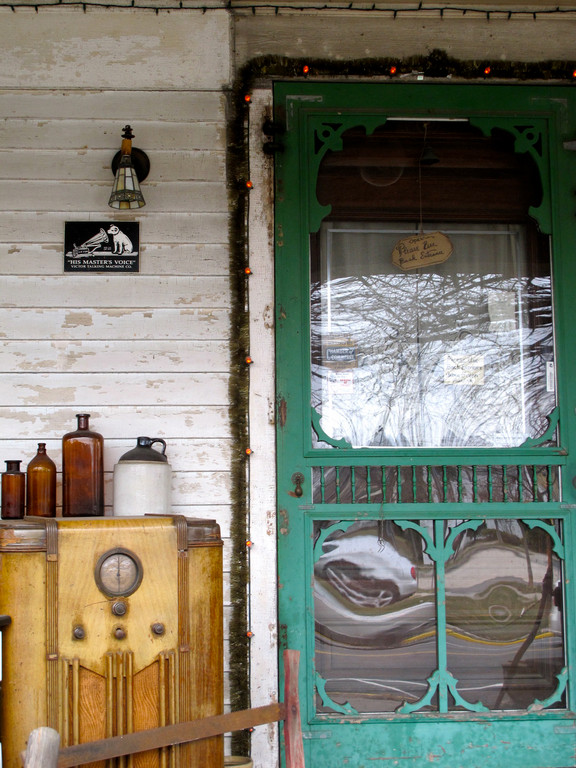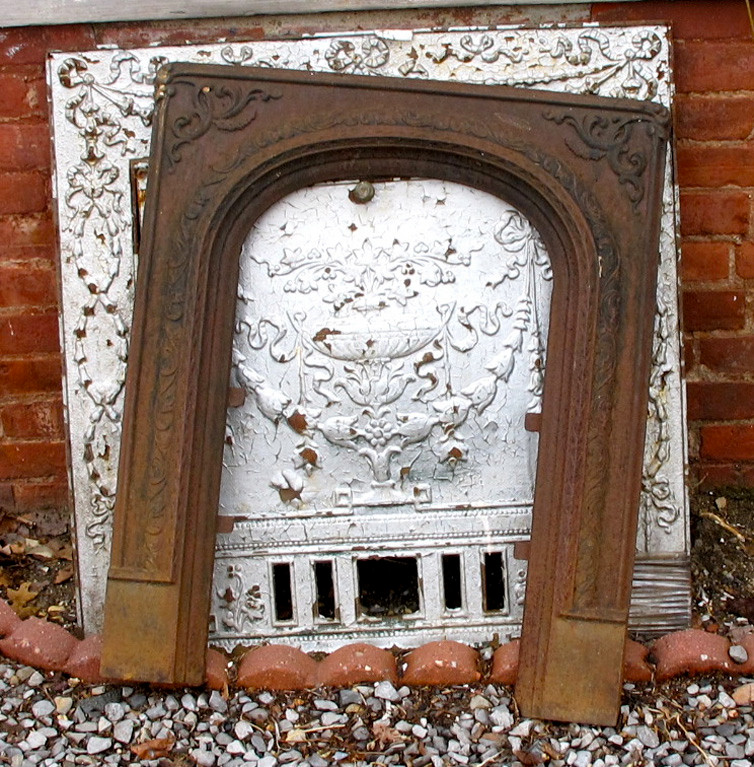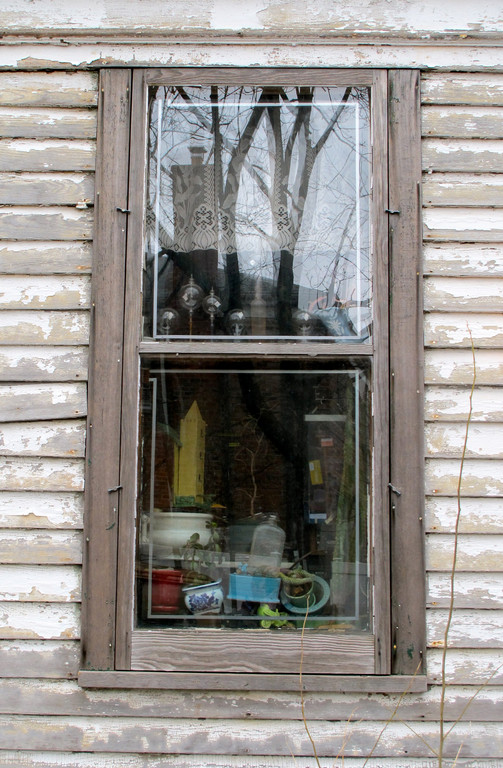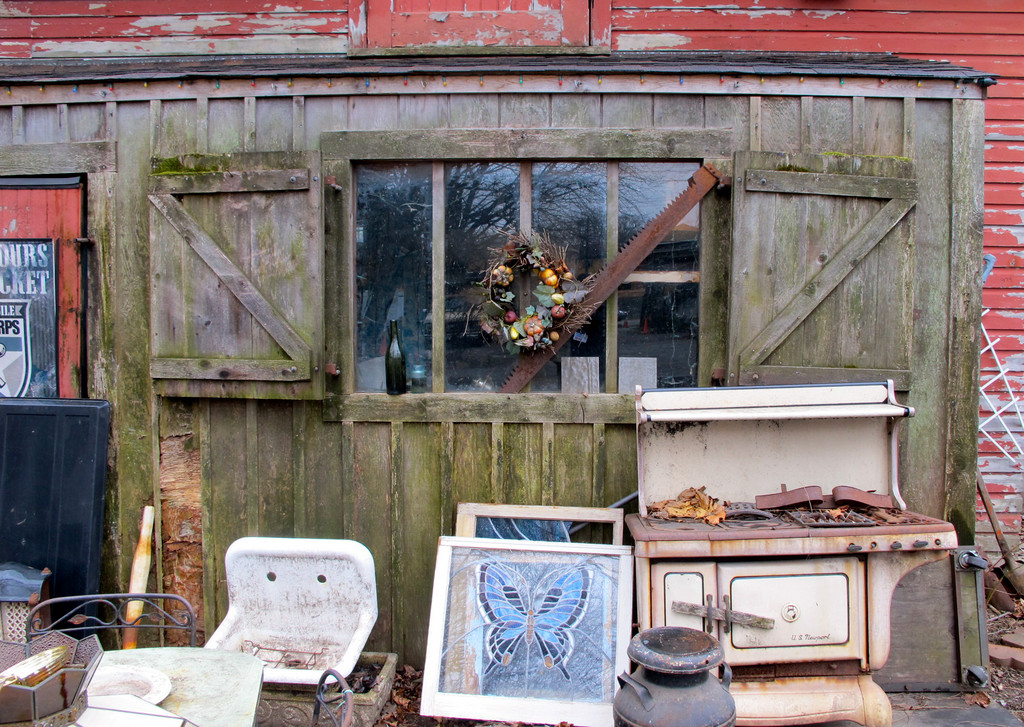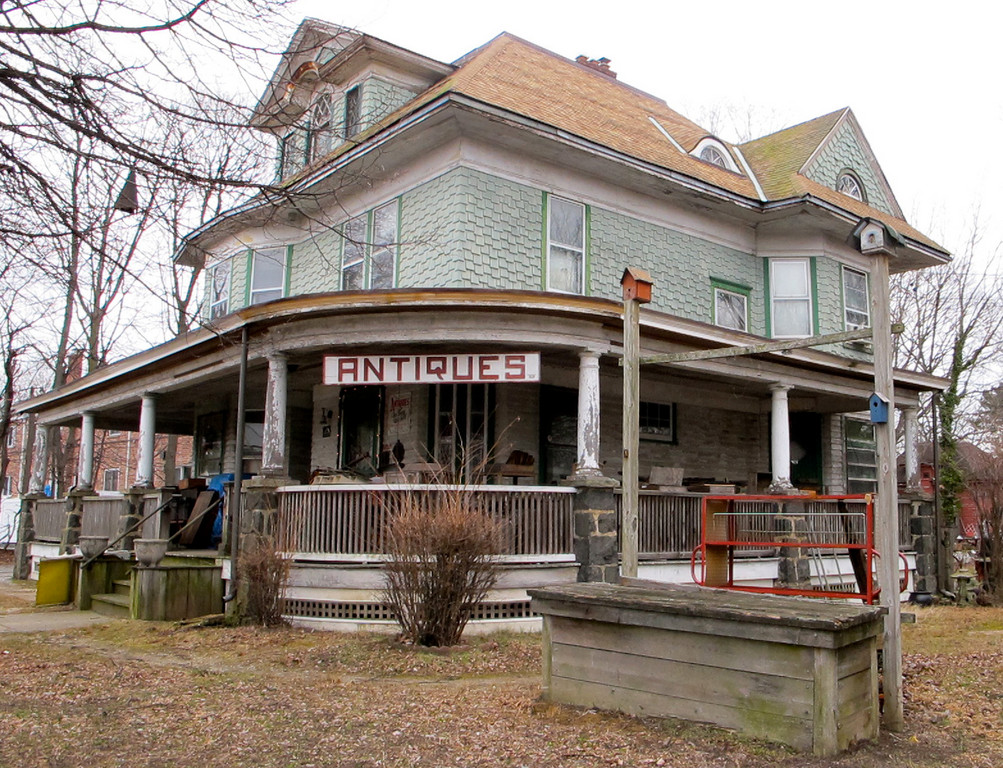This old house
The building on the future site of the new 1st Precinct has its own history
There is no doubt that Baldwin will welcome the new 1st Precinct building slated for construction at the corner of Harrison Avenue and Merrick Road in the fall. But one of the sacrifices that will be made to serve the greater good will be the demolition of a structure with a rich history of its own.
The rambling, green-and-white-shingled building with the wrap-around porch that currently occupies the site of the station house-to-be was built in 1901 at the behest of a Civil War veteran named George Kellogg. Although it has operated as an antiques store and occasional flea market in recent years, up until the late 1990s it served as a family home, accommodating several generations of an active and patriotic clan.
“George Kellogg served in the 10th Massachusetts infantry,” said Todd Schonenberg of Ramona, Calif., whose father grew up under the swooping eaves of the Harrison Avenue house. “I have his regimental history and muster roll, which I found in the attic, along with the original blueprints for the house, in the early 1960s.”
According to Schonenberg, his grandparents took possession of the home from the Kelloggs around 1919 and started a family. As it turned out, Kellogg was not the only occupant of the home to serve in the armed forces. Many of the men who have lived there have fought for their country, Schonenberg said.
“My grandparents had five children, four of them boys,” he recounted. “All the boys served concurrently in World War II: John, Fred, Henry and Herman Schonenberg. At the time, this was referred to as a ‘four-star home.’” All four brothers’ names appear on Baldwin’s World War II memorial.
“My father saw the most combat as a P-51 Mustang pilot, and was cited in local papers when he shot down his first German aircraft,” Schonenberg continued. “His own plane was named after my mother, another Baldwin resident. They’re both still living, and are down in Florida.”
Schonenberg said that since the majority of his aunts, uncles and cousins lived in Baldwin — many attended Baldwin Senior High School — the house was an anchor for the family until the late 1960s. “We all referred to the house as our version of Sagamore Hill,” he said. “Not as big, not as famous, but our family base.”

 39.0°,
Fair
39.0°,
Fair 